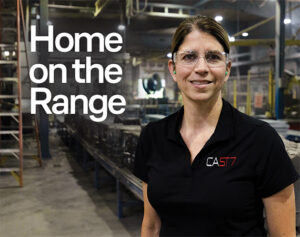Fred Zimmerman’s legendary career in manufacturing includes stints at IBM, Control Data, and National Computer Systems. He has worked in engineering, management, and executive positions. A professor emeritus in engineering at the University of St. Thomas, Zimmerman is one of Minnesota manufacturing’s strongest and most vocal supporters. At nearly 90 years old, he continues to give presentations and serve as a resource to the media on issues surrounding manufacturing and the economy.
Why is manufacturing so important to Minnesota’s economy?
Fred: Dave Beal, a former business editor at the Twin Cities Pioneer Press, and I wrote a book a few years ago called, Manufacturing Works. We looked at all 3,142 counties in the U.S., and we found what we called “Hinterland Hotspots” — counties that didn’t have big cities and weren’t even near an interstate. If they had a solid manufacturing base, they were real pockets of prosperity. In our classifications, we also identified those big cities that had lost manufacturing — places like Detroit. We called those “Sliding Goliaths.” The most significant factor related to community prosperity was not business climate, not taxes, and not public policy. It was the quality and competitiveness of major manufacturing companies operating in those communities that mattered. The Hinterland Hotspots were much more prosperous than the Sliding Goliaths.
Our industrial economy is the heart of all the nation’s wealth. It doesn’t come from people building web pages; that’s minuscule in terms of the dollar impact. The wealth comes from large, capable manufacturing companies. But the list is shrinking. At the end of the Second World War, almost all major products of almost any field — appliances or aircraft or cars— were manufactured in the United States. At that time, we had about 35% of our non-farm employment in manufacturing. Now we have maybe nine. The service economy is important to us, but it generates very few exports.
What’s leading to the decline in manufacturing?
Fred: The first thing that happened is we have all this overhead. Somebody’s got to pay for the accountants and the lobbyists and the advertisers and all these other things, and it makes the companies less competitive.
There’s also a problem with management. Somebody can run a company into the ground and take it into bankruptcy and still be running it. In Europe if you do something like that, you’re out of a job. A friend of mine was head of a machine tool company in Germany, and they had something like three losing years. He was out of a job.
Many of the CEOs of the German companies are also quite technical. Many of them are engineers. I’m not advocating that all executives are engineers — you do need a mix — but they have expertise in something. The company 3M used to be that way too; they had four sector vice presidents, and all of them were groomed to lead. They didn’t know for sure who’d take over as the next CEO, but they all had academic backgrounds in advanced technical subjects. So that’s one issue: A good portion of the managerial core in the United States is not sufficiently schooled in what they need to know in order to run these companies
If you look at the smaller manufacturers, they can be quietly sensible and benevolent, and they will hold their employment. It isn’t that they don’t ever make across-the-board reductions and that they never have to lay people off, but it’s merit-based and it’s thought about, and it’s reserved for emergencies. But we need more thoughtful companies.
What are the biggest threats to Minnesota’s manufacturing sector?
Fred: Everyone is getting older. Within manufacturing you have good workers and good middle people. There’s authority, power, and influence. It’s never distributed by rank in companies. It’s distributed among people who know something and have certain skills, and they have influence. And among those ranks, most of them are old. The average welder in the United States is something like 60 years old, and you have all these aging experts who are close to retirement, and there are not enough people coming up the pipeline.
There is a misalignment of opportunities for young people that contributes to this problem. When I did some teaching at St. Cloud State University, some of the students were potentially good hires, but a high percentage of them were finance majors when companies really needed engineers. There are top rated manufacturing companies in that community that are crying for good employees, but few people apply. Instead, these promising young people will go out to the crowded overhead fields, which are usually lower paid with longer hours.
What are the most important lessons you’ve learned from your decades in manufacturing?
Fred: Get good people and treat them well. Employees flock to the companies that treat them right. I saw that when I was working in Moline, Ill. for IBM. The attitude of the town, if there was hiring to be done, was that they all flocked to John Deere. Deere took the most capable people. Then the next group went to Case. And if anybody was leftover, they would go to International Harvester.
Successful companies also get their employees involved in the process. I was on the board of Winnebago, the motorhome manufacturer, for a long time, and they had a suggestion program. The minimum award was $25 for almost anything that anybody suggested. But some of the awards were quite substantial. One guy came up with the idea of these cutouts for where the windows are, that’s good material. And they use those for the floor of the closets. Importantly, the CEO gave out these awards.
Be innovative, but don’t follow every fad. The companies that seem to do well are those that improve quality at every step. They worry about whether every stage in the manufacturing process is well done. The management of successful companies pays attention to lots of things, little things all the time.
Return to the Fall 2025 issue of Enterprise Minnesota® magazine.


